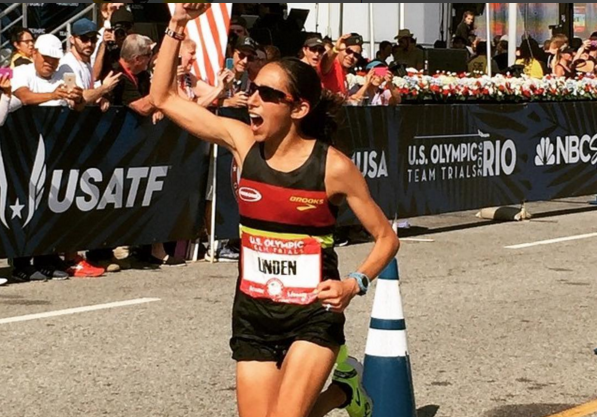For even marathon splits, be like Des Linden, aka the human metronome
American marathoner Des Linden has an amazing ability to run even splits

2018 Boston Marathon champion Des Linden is a great example of someone who consistently runs even splits (or pretty close) in every marathon she races. Though she was initially “irritated” at her sixth-place finish in New York, at 35, Linden has plenty of time to “keep showing up” and, hopefully, rack up some more stellar performances.
RELATED: Marathon pacing 101: How the heck to actually run a marathon
Took some time to process my #TCSNYCMarathon race. Tried some new things. Learned a lot. Initially irritated but a new experience and more knowledge is incredibly valuable. Train. Test. Tweak. Refine. Repeat.
Onward.
?: @StephenKersh | #runhappy pic.twitter.com/XcMbhfi2nS
— des_linden (@des_linden) November 8, 2018
It’s rare for a marathoner to pull off a nine-minute negative split, as 2018 champion Mary Keitany ran at the TCS New York City Marathon earlier this month. (And Keitany’s splits reflected an unusually slow, tactical start to the women’s race.) Ideally, the goal is to get your splits as close to even as possible, or to run a slight negative split, with the second half a touch faster than the first. Few among us can aspire to be like Eliud Kipchoge, who ran a 32-second negative split in his world-record-shattering performance at the BMW Berlin Marathon in September.
This is why they call @des_linden 'The Human Metronome'.
(They do, right? If not, they should)
(I don't know who "they" are, btw) pic.twitter.com/XepMa9JJWs
— Jon Mulkeen (@Statman_Jon) April 19, 2017
Linden is a little more relatable than Kipchoge for the average recreational marathoner who’s trying to score a personal best or a Boston qualifier. Linden has never run a negative split, but she ran perfectly even splits (down to the second) at the 2017 Boston Marathon. Her time was 2:25:06, good enough for a fourth-place finish in an incredibly strong field that saw Edna Kiplagat, Rose Chelimo and Jordan Hasay climb the podium.
At the Rio Olympics the previous year, Linden ran a four-second positive split. At Chicago in 2010, she ran a six-second positive split. It’s for this reason that Linden has been called the human metronome. Consistency in pace requires consistency in training, and both are necessary for consistently excellent results.
https://twitter.com/mariofraioli/status/1060609729456672769
For most people, the goal is simply to try not to slow down too much in the second half. Patience and discipline in pacing are key. If you have a goal time, calculate the pace you need to run, and plan to stick to it throughout the race. Be aware that it will feel much too easy at the start, and it may still feel easy at the halfway point, but you should resist the temptation to pick up the pace.
As you get further into the race and start to fatigue, your rate of perceived effort (RPE) will increase, so you will have to work progressively harder just to maintain the same pace. In the last five kilometres or more, you will probably struggle not to slow down. One of the most common mistakes marathoners make is to start picking up the pace too early in the race, which (if you are not Eliud Kipchoge or Mary Keitany) often leads to slowing down in the latter stages. If you can muster a sprint for the finish line, well done, but that is the only part of the course where sprinting is appropriate. Remember, it’s a marathon, not a sprint.


